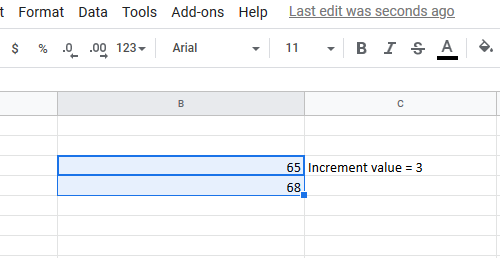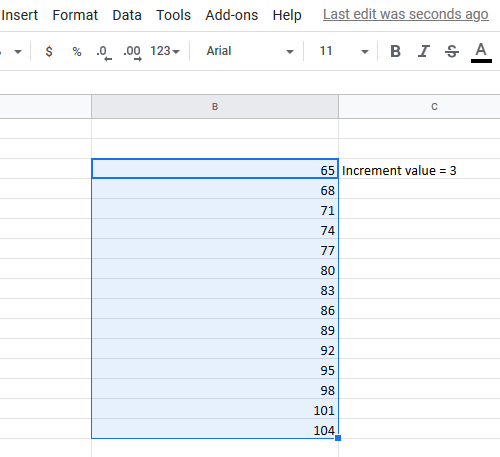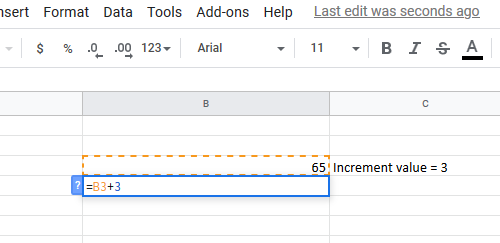While working with Excel sheets, it is very common to fill increment cells. Increment cells are cells in which numerical values are arranged with a fixed increment value across a column. This could be sequential numbers like 1,2,3, and so on or with fixed increments like 73, 76, 79, 82, etc.

Automatically fill Increment Cells in Excel
- How to automatically fill increment cells in Excel using the Autofill function
- How to automatically fill increment cells in Excel using the formula
Interestingly, we don’t even need a formula for this action. The Autofill function would be sufficient. Though we will discuss the formula as well.
Increment numbers when value changes in another column using Autofill in Excel
You can automatically fill increment cells in Excel using the Autofill function as follows:
Pick a column and enter the numerical values in the first 2 cells. The difference between the numerical values in those two cells should be the increment value and the cell with the lower value should be above the cell with a higher value.
Now click anywhere outside the cell and then select those 2 cells again.
This will highlight the Autofill function.
Click on the dot on the bottom-right corner of the selection and pull the selection down to the cell till which you need the incremented list.
Eg. Let us assume you need to automatically fill increment cells in column B starting from cell B3 to B10 such that the first value is 65 and the increment value is 3.

Insert the value 65 in cell B3 and 68 (65+3) in cell B4. Now click outside the cell and select both cell B3 and B4 again.

Using the dot at the button-right corner of the selection, pull the list down to cell B10.
Fill incremental cell values in Excel using formula
Even while using the formula, you would have to use the Fill option. However, in this case, you would be entering the increment value instead of adding manually. The formula for increment value is:
=<first cell in list from which you start incrementing>+<increment value>
Where,
- <first cell in list from which you start incrementing> is the first cell in the column from which you start counting the increment.
- <increment value> is the value of each subsequent increment.
Eg- Let us consider the case with the earlier example. In this case, we could have to enter the following formula in cell B4:
=B3+3

Then simply pull the formula down to cell B10 using the Fill option.
To do so, click outside cell B4 and back on it (only cell B4, not the whole selection) and pull the formula down till cell B10.
We hope this helped you.
Read: How to convert Columns to Rows in Excel with Formulas.